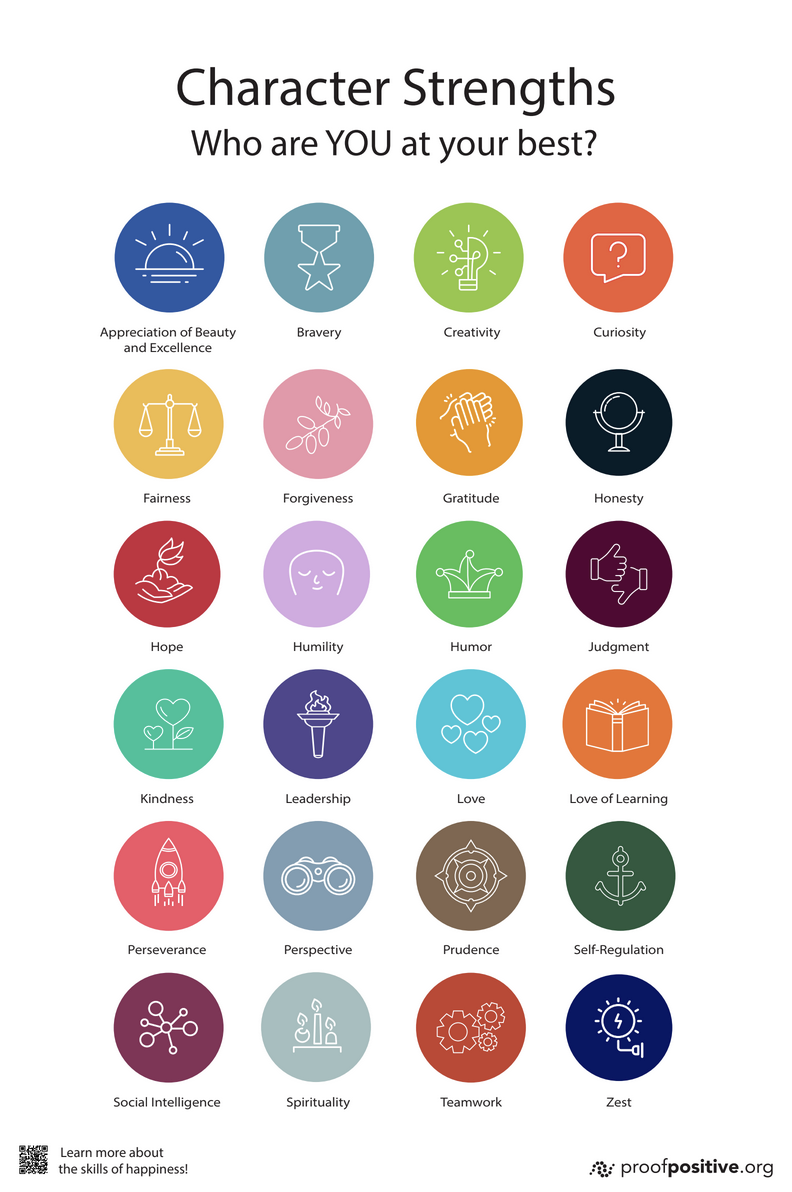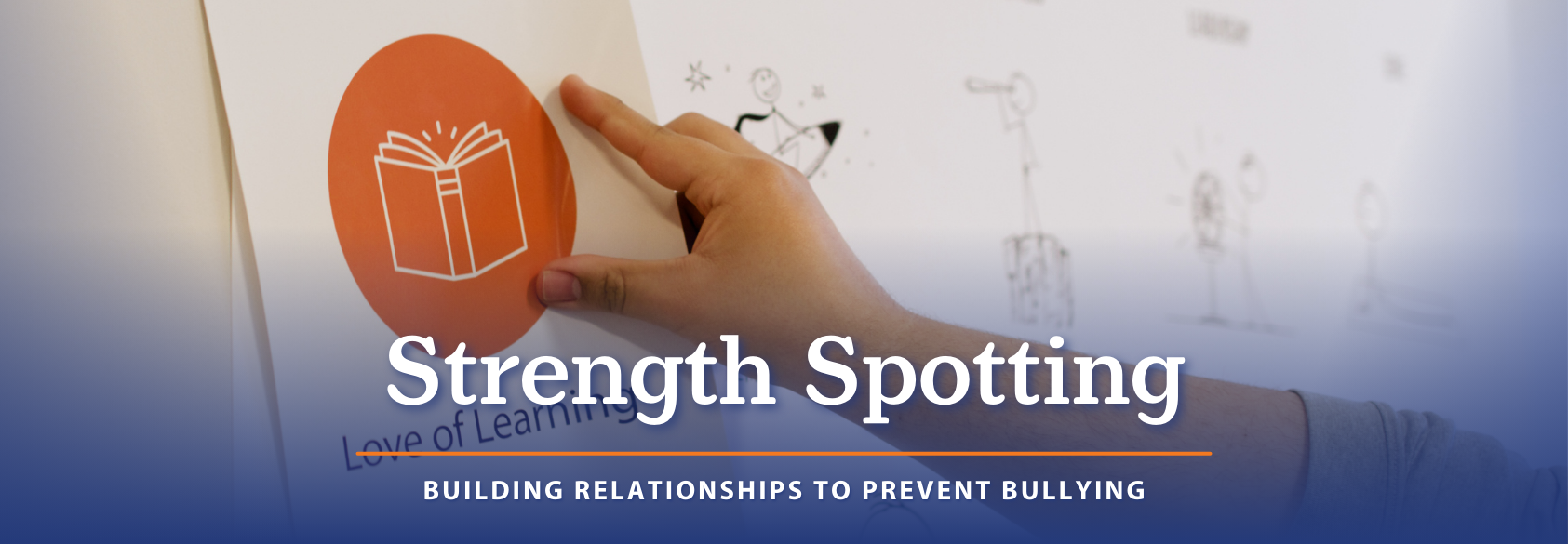At its core, bullying often arises from a breakdown in relationships—a lack of compassion, understanding or connection. When we don’t know someone or can’t see their value, it becomes easier to view them as “other.” However, strength spotting flips this dynamic; It allows us to look for, appreciate, and celebrate what is right in ourselves and others.
It’s hard to bully someone with whom you have built a relationship, especially when you actively work to see and acknowledge that person’s strengths. When others see and notice your strengths, this positive feedback loop leads to strengthened relationships, which can act as a buffer against potential bullying.
Three Steps to Incorporate Strength Spotting into the Classroom
Here’s how you can incorporate strength spotting into your day-to-day classroom environment:
- Discover students’ unique set of signature strengths. Become aware of your strengths and the strengths of others. Start by having students take the VIA Character Strengths Survey (there is one that is age-appropriate for elementary students, too). Students can then display their character strengths on their desk, on a classroom bulletin board or on the classroom door—have fun and get creative! Try this comprehensive Character Strengths Unit Study as you explore all the ways character strengths can be incorporated into the classroom.
-
Create a strength spotting shoutout bulletin board. Put up a bulletin board or poster in your classroom where students can spot strengths in others; do this every day. You can download and use this printable character strengths poster and these strength spotting shoutout cards to help guide the activity.

- Teach strength spotting with a comprehensive unit study. You can use these free teaching slides and activities to teach your students all about strength spotting!
These strategies also be used in the workplace to build community, strengthen relationships and increase compassion among colleagues. Consider how you might add strength spotting to a team meeting or during an all-staff training session.
This Bullying Prevention Month (and every month), we encourage you to embed strengths into the daily fabric of your classrooms, schools and workplaces to create a world where well-being wins for all. In the wise words of artist, poet and author Cleo Wade: “Don’t be the reason someone feels insecure. Be the reason someone feels seen, heard and supported by the whole universe.”














